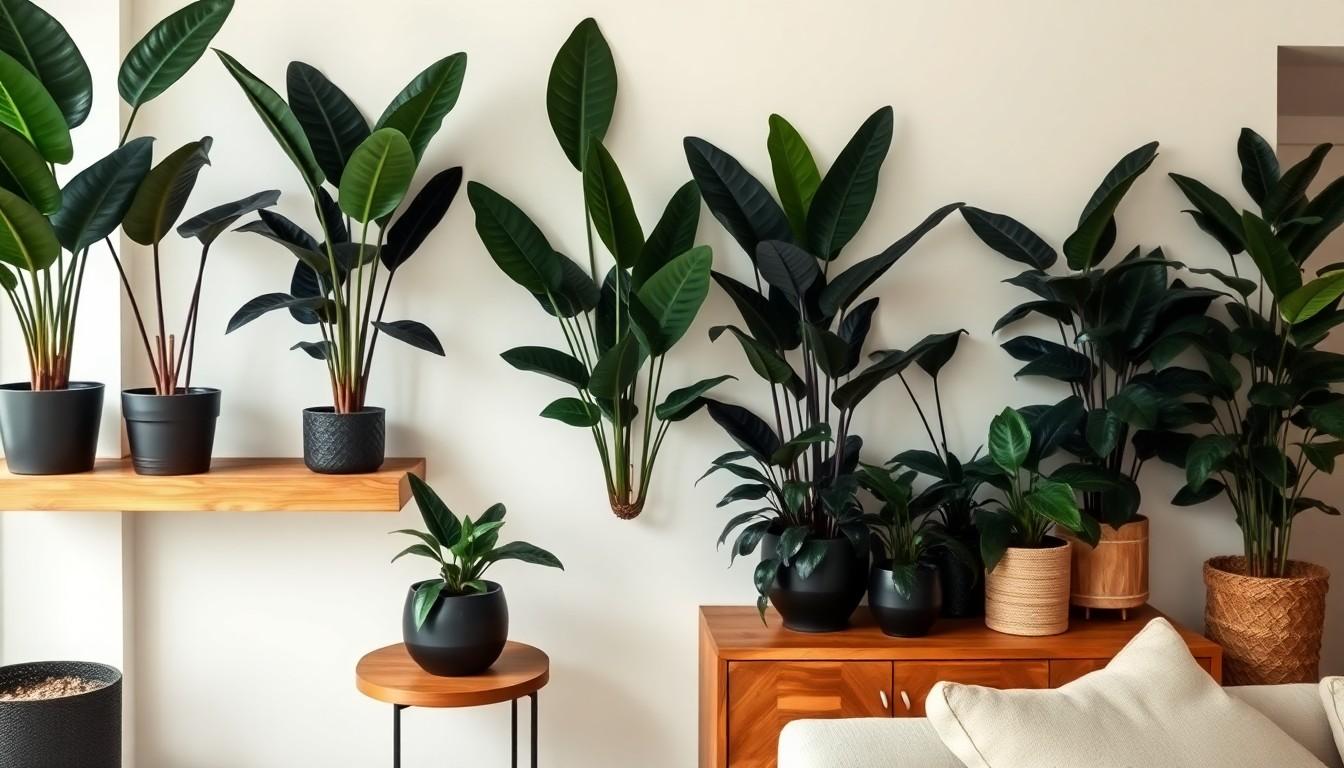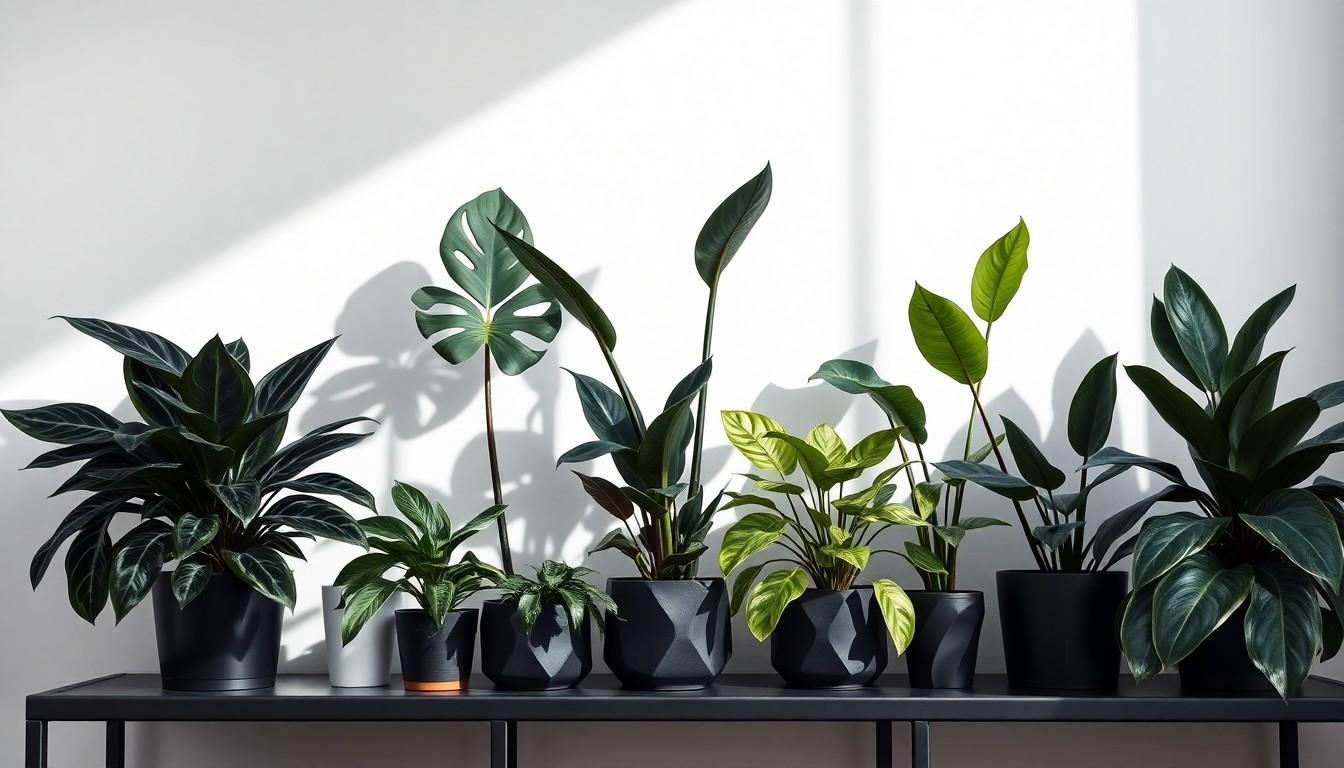The Best Fluffy Pancakes recipe you will fall in love with. Full of tips and tricks to help you make the best pancakes.

Black Plants Indoor: Unlock the Secrets to Stunning Home Decor
In a world bursting with vibrant greens and colorful blooms, black plants are the stylish rebels that steal the show. They’re not just plants; they’re a statement. These dramatic beauties bring a touch of mystery and sophistication to any indoor space, turning your home into a chic botanical haven. Who knew that adding a little darkness could brighten up your life?
Overview of Black Plants Indoor
Black plants bring an unexpected elegance to indoor spaces. These striking plants come in a variety of species, each offering unique aesthetics and characteristics. For example, the Black Coral Snake Plant showcases dark green leaves with subtle black markings, making it a captivating choice for any room.
Plants like the Black Knight Hellebore possess almost black foliage, enhancing visual interest and depth in arrangements. Such plants thrive in various indoor conditions, providing flexibility for placement and care. It’s essential to understand that these plants often require specific light and moisture levels for optimal health.
Caring for black plants can be straightforward, given their resilience. Regular watering and providing adequate drainage can prevent common issues like root rot. Additionally, a well-draining soil mix supports their growth well. When positioned correctly, these plants flourish and can live for several years indoors.
Moreover, the use of black plants can complement other home decor elements. Pairing them with contrasting pots or light-colored furnishings emphasizes their boldness. Black plants also harmonize with natural materials like wood and stone, creating a balanced atmosphere.
Incorporating black plants into indoor settings adds drama, sophistication, and intrigue. Their striking appearance and low-maintenance care make them appealing choices for plant enthusiasts and decorators alike.
Popular Black Plants for Indoor Spaces

Black plants offer an intriguing aesthetic, providing a dramatic flair to indoor environments. Here are some popular options to consider.
Black Velvet Alocasia
Black Velvet Alocasia stands out due to its striking dark leaves and velvety texture. This tropical plant requires bright, indirect light for optimal growth. Humidity plays a crucial role in its care; maintaining higher levels enhances its lush appearance. Watering should be consistent, allowing the top inch of soil to dry out between sessions. Overwatering can lead to root rot, so careful monitoring is essential. Its unique visual appeal makes Black Velvet Alocasia an eye-catching choice for any indoor setting.
Black Coral Snake Plant
Black Coral Snake Plant features upright, dark green leaves adorned with subtle silver markings. This hardy plant thrives in various lighting conditions, from low light to bright indirect light. It boasts low water requirements, needing infrequent watering to maintain health. Allowing the soil to dry out completely between waterings prevents overwatering issues. This plant serves as a perfect addition to modern decor, providing a sleek and elegant touch to homes.
Black Bat Plant
Black Bat Plant, known for its unusual bat-like flowers and distinct foliage, creates a striking focal point. This plant flourishes best in bright, filtered light. Humidity is important, so a humid environment fosters healthier growth. Regular watering helps maintain soil moisture, but drying out between waterings aids in preventing root issues. The Black Bat Plant thrives in well-draining soil, enhancing its thriving nature. Its whimsical appearance adds an element of intrigue to any indoor arrangement.
Benefits of Having Black Plants Indoors
Black plants enhance indoor environments with their striking aesthetics and unique charm. They create a dramatic contrast that draws attention and adds elegance.
Aesthetic Appeal
Black plants introduce a sophisticated touch to any space. Incorporating them into design schemes elevates overall decor, creating focal points that captivate the eye. The rich shades of black, like those found in the Black Velvet Alocasia, can seamlessly integrate with diverse styles, from modern to bohemian. Their dark leaves and distinct shapes lend depth and texture to indoor arrangements. Pairing these plants with light-colored pots accentuates their beauty and makes them stand out even more. By selecting various black plant species, one achieves a layered look that feels both intentional and stylish.
Air Purification
Indoor black plants not only beautify spaces, but they also improve air quality. Many species, including the Black Coral Snake Plant, excel at filtering indoor pollutants, creating a healthier atmosphere. These plants absorb toxins like formaldehyde and benzene, contributing to cleaner air. Studies demonstrate that certain houseplants can reduce levels of airborne contaminants, promoting well-being. Incorporating these resilient plants indoors supports a serene environment, beneficial for physical health and mental clarity. Their ability to thrive in various light conditions makes them practical choices for enhancing air quality throughout living spaces.
Care Requirements for Black Indoor Plants
Caring for black indoor plants involves understanding specific needs. Proper attention ensures their health and vibrancy.
Light Conditions
Bright, indirect light benefits most black plants. The Black Velvet Alocasia thrives in such conditions, promoting lush growth. Conversely, some varieties, like the Black Coral Snake Plant, adapt well to low light. Plants typically adjust, but consistent, adequate light boosts their aesthetic appeal and overall vitality.
Watering Needs
Moderate watering is essential for these plants. Allowing the top inch of soil to dry between waterings promotes healthy root systems. Too much moisture results in root rot, especially in plants like the Black Bat Plant, which appreciates humidity. Observing each plant’s response to watering helps maintain optimal hydration.
Soil and Fertilization
Well-draining soil is critical for black indoor plants. A mix of potting soil with perlite or sand enhances drainage and air circulation. Fertilize during the growing season with a balanced, diluted fertilizer every four to six weeks. Regular fertilization supports healthy growth, ensuring vibrant foliage and strong plants.
Conclusion
Black plants offer a unique way to elevate indoor spaces with their striking aesthetics. Their dark hues create dramatic contrasts that enhance the overall decor while adding a touch of sophistication. With minimal care requirements and a variety of species to choose from, these plants are perfect for both seasoned plant lovers and those new to indoor gardening.
Incorporating black plants not only beautifies a home but also contributes to a healthier environment through their air-purifying qualities. By selecting the right species and providing proper care, anyone can enjoy the captivating allure of black plants, transforming their living areas into chic botanical retreats.
